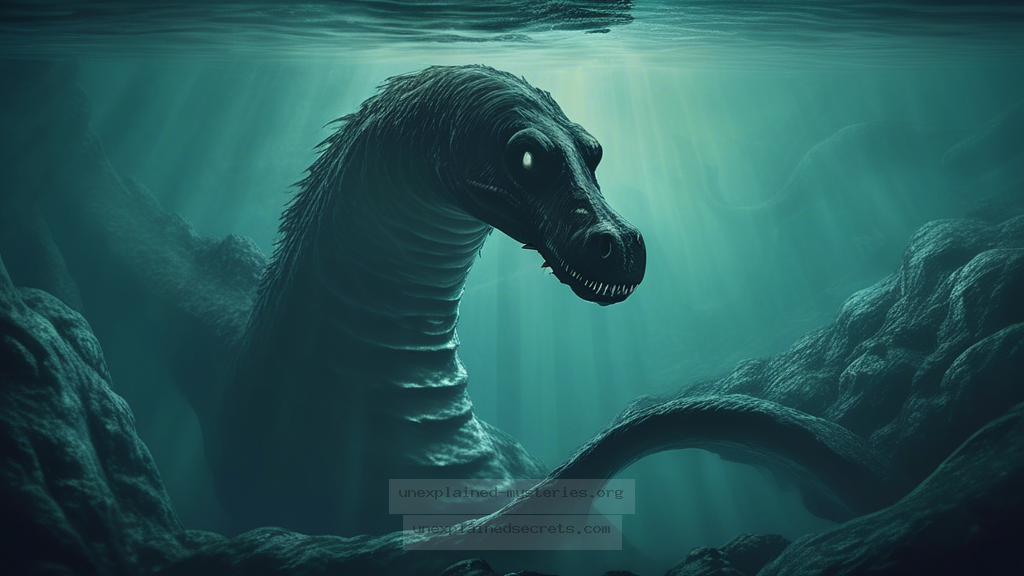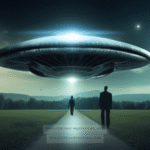What Really Lurks in the Depths of Loch Ness: Unraveling the Mysteries of the Loch Ness Monster?
What Really Lurks in the Depths of Loch Ness: Unraveling the Mysteries of the Loch Ness Monster?
The Loch Ness Monster, often affectionately referred to as “Nessie,” has captivated the imagination of millions for decades. Is it a prehistoric creature, a misidentified animal, or simply a figment of folklore? This question is more than mere curiosity; it touches on the intersection of science, mythology, and human psychology. Understanding the legacy and ongoing intrigue surrounding Nessie can offer insight not only into cryptozoology but also into how humanity perceives the unexplained. Let’s dive deep into this enigma, exploring historical accounts, scientific investigations, and the cultural impact of this legendary creature.
Historical Context: The Origins of the Loch Ness Legend
The legend of the Loch Ness Monster dates back to ancient times. The first recorded sighting occurred in the 6th century, when an Irish monk named Saint Columba allegedly encountered a “water beast” in the River Ness. According to accounts, he saved a local man from the creature’s clutches, which set the stage for centuries of speculation.
Fast forward to the 1930s, when modern fascination with Nessie began to take shape. In 1933, a photograph known as the “Surgeon’s Photo” was published, purportedly showing a long-necked creature emerging from the loch. This image sparked a media frenzy and led to a wave of sightings, drawing tourists and cryptozoologists alike to the Scottish Highlands.
Core Concepts and Theories Surrounding Nessie
Theories about the Loch Ness Monster vary widely, ranging from the plausible to the fantastical. Some of the core concepts include:
- Surviving Plesiosaur: One of the most popular theories is that Nessie is a surviving plesiosaur, a marine reptile that lived during the age of dinosaurs.
- Giant Eels: Some researchers suggest that what people have seen could actually be large eels, which can grow to impressive sizes.
- Optical Illusions: The loch’s unique geography may create visual distortions, leading to misinterpretations of logs or waves as a creature.
- Hoaxes and Misidentifications: Many sightings can be attributed to hoaxes or misidentified animals, including otters or birds.
Each of these theories has its advocates and detractors, contributing to the ongoing debate about the true nature of Nessie.
Practical Implications: Scientific Investigations into Loch Ness
Over the years, various scientific investigations have been conducted to uncover the truth behind the Loch Ness Monster. In 2003, a team of researchers conducted a comprehensive underwater survey using sonar technology. They discovered numerous objects on the loch’s floor but found no definitive evidence of a large creature.
More recently, in 2018, a team from New Zealand attempted to use environmental DNA (eDNA) sampling to identify the species present in Loch Ness. This method involves collecting water samples and analyzing them for genetic material. The researchers found no evidence of large unknown species, suggesting that the legendary creature might not exist.
Alternative Perspectives: The Cultural Impact of Nessie
Beyond the scientific discourse, the Loch Ness Monster has been a cultural phenomenon. Nessie has inspired countless books, movies, and even merchandise, contributing significantly to the local economy through tourism. The legend serves as a point of pride for many Scots, symbolizing the mystique of the Highlands.
This cultural significance is often overlooked in scientific discussions. The emotional and psychological aspects of the Nessie phenomenon highlight humanity’s innate desire to believe in the extraordinary. It raises questions about what such beliefs say about us as a society and why we are drawn to tales of the unknown.
Common Misconceptions and Clarifications
Several misconceptions about the Loch Ness Monster persist, often fueled by sensational media coverage. Here are a few clarifications:
- All Sightings are Hoaxes: While some sightings have been proven false, many witnesses are credible individuals who genuinely believe they saw something unusual.
- Nessie Must Be a Single Creature: Some theorists suggest that sightings may refer to multiple creatures or phenomena, rather than a single entity.
- Science Has Disproven Nessie: While scientific evidence is lacking, the mystery continues to draw interest, and the possibility of undiscovered creatures remains open.
Best Practices for Investigation or Study of Cryptids
For those interested in investigating cryptids like the Loch Ness Monster, several best practices can enhance the experience:
- Research Thoroughly: Familiarize yourself with historical accounts and scientific research to ground your investigations in facts.
- Engage with Local Experts: Connect with local historians, naturalists, and cryptozoologists who can provide insights and guidance.
- Utilize Technology Wisely: Employ advanced technologies like drones and underwater cameras for a more comprehensive exploration of potential habitats.
- Document Findings: Keep detailed records of sightings, experiences, and environmental conditions to contribute to ongoing discussions.
These practices not only enhance the credibility of investigations but also foster a community of responsible enthusiasts.
Future Developments and Ongoing Research
The exploration of Loch Ness and the search for Nessie are far from over. As technology advances, new methods of investigation are emerging. For instance, the use of AI and machine learning in analyzing video footage may yield new insights into sightings that were previously dismissed.
Moreover, ongoing research into unexplained phenomena in other regions may provide comparative data, opening up discussions about the existence of cryptids globally. The scientific community continues to be intrigued by cryptozoology, challenging the boundaries of what is considered possible.
Conclusion: The Enduring Mystery of the Loch Ness Monster
The question of what really lurks in the depths of Loch Ness remains unanswered, but that only adds to the allure of the legend. From ancient tales to modern scientific investigations, the Loch Ness Monster serves as a reminder of humanity’s fascination with the unexplained. Whether a surviving relic from the age of dinosaurs or a cultural phenomenon, Nessie’s story continues to evolve. The mysteries of the Loch are deep, and as long as they are, so too will be our curiosity about what lies beneath the surface.
In a world increasingly dominated by science and logic, the allure of the Loch Ness Monster stands as a testament to our enduring love for mystery and the unknown. As we continue to explore, investigate, and debate, the legend of Nessie remains a symbol of hope that perhaps, just perhaps, there are still mysteries left to uncover.
Other Articles
Recent Posts
- What Happened to Flight MH370? The Conspiracy Theories That Still Haunt Us
- What Secrets Lurk Within the Walls of the Infamous Trans-Allegheny Lunatic Asylum?
- What Evidence Supports the Existence of Bigfoot in the Pacific Northwest?
- What Happened to the Indus Valley Civilization? Unraveling the Mysteries of Ancient Urban Life
- Can Telepathy Be Scientifically Proven Through Laboratory Evidence?







